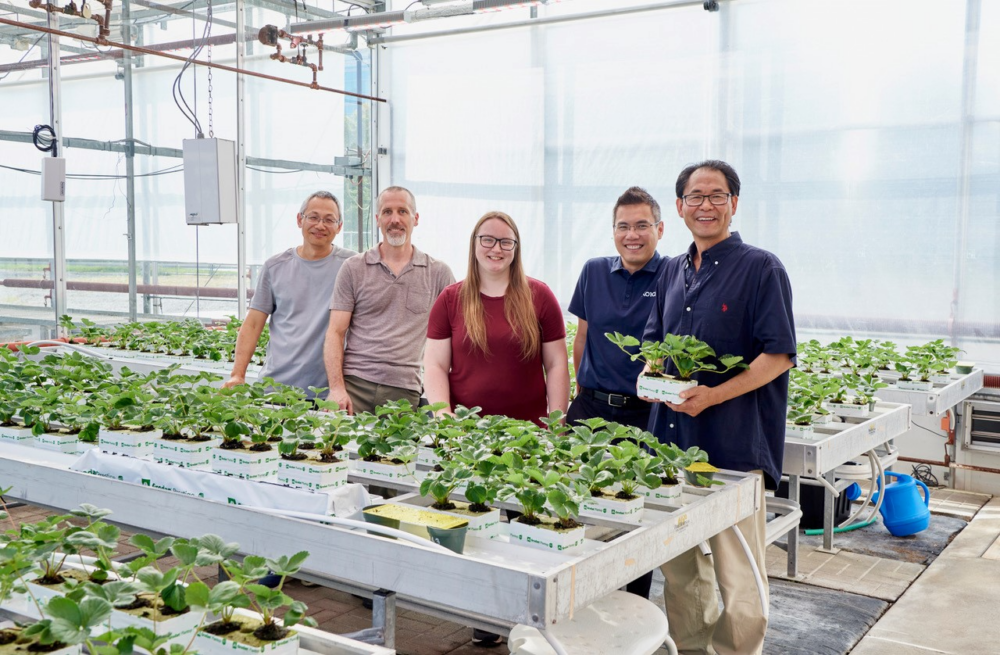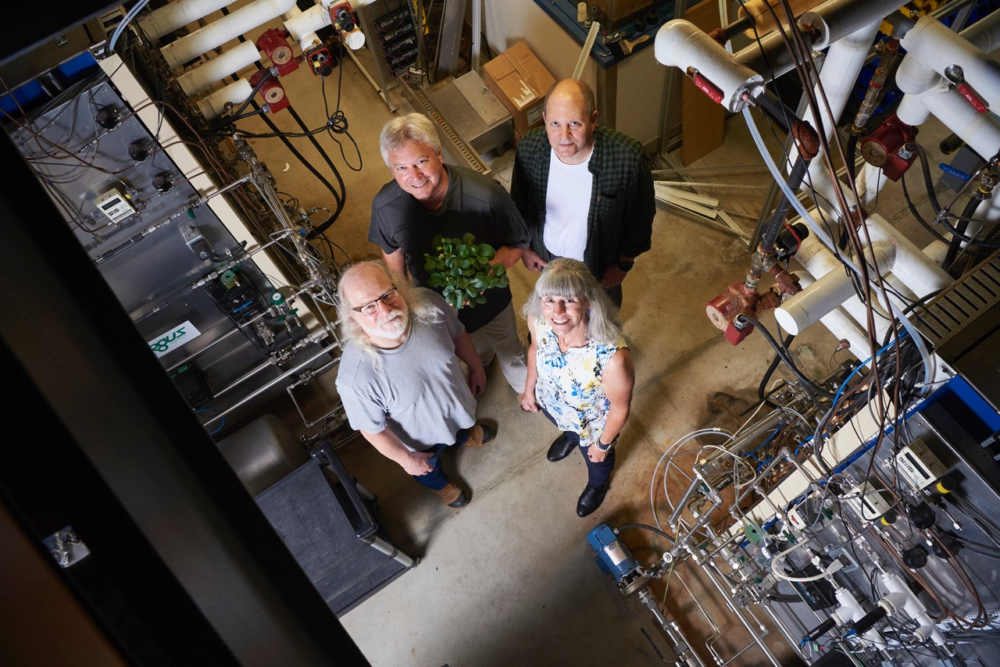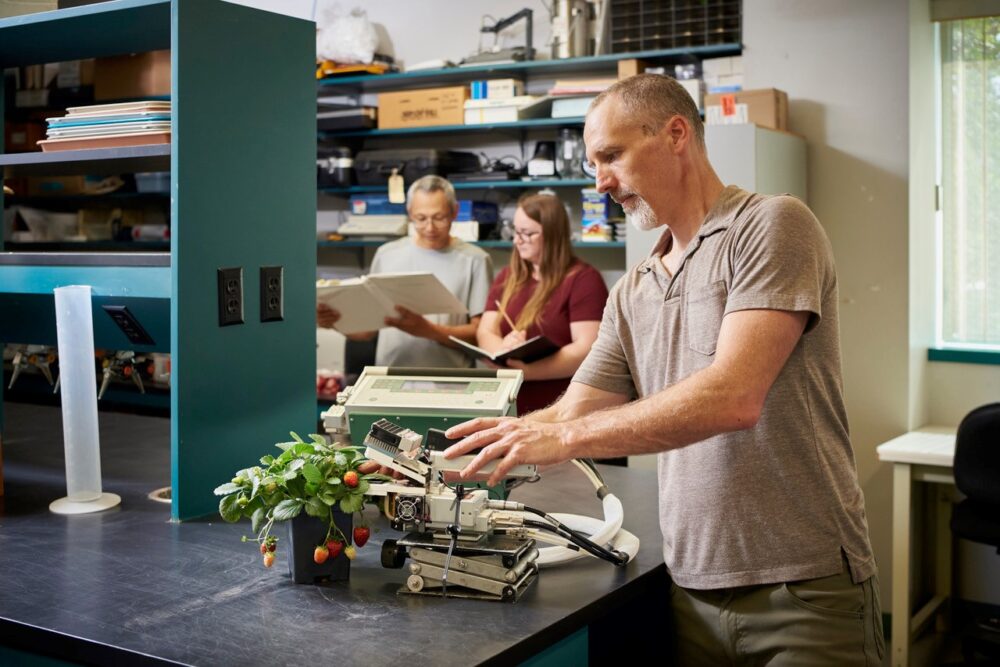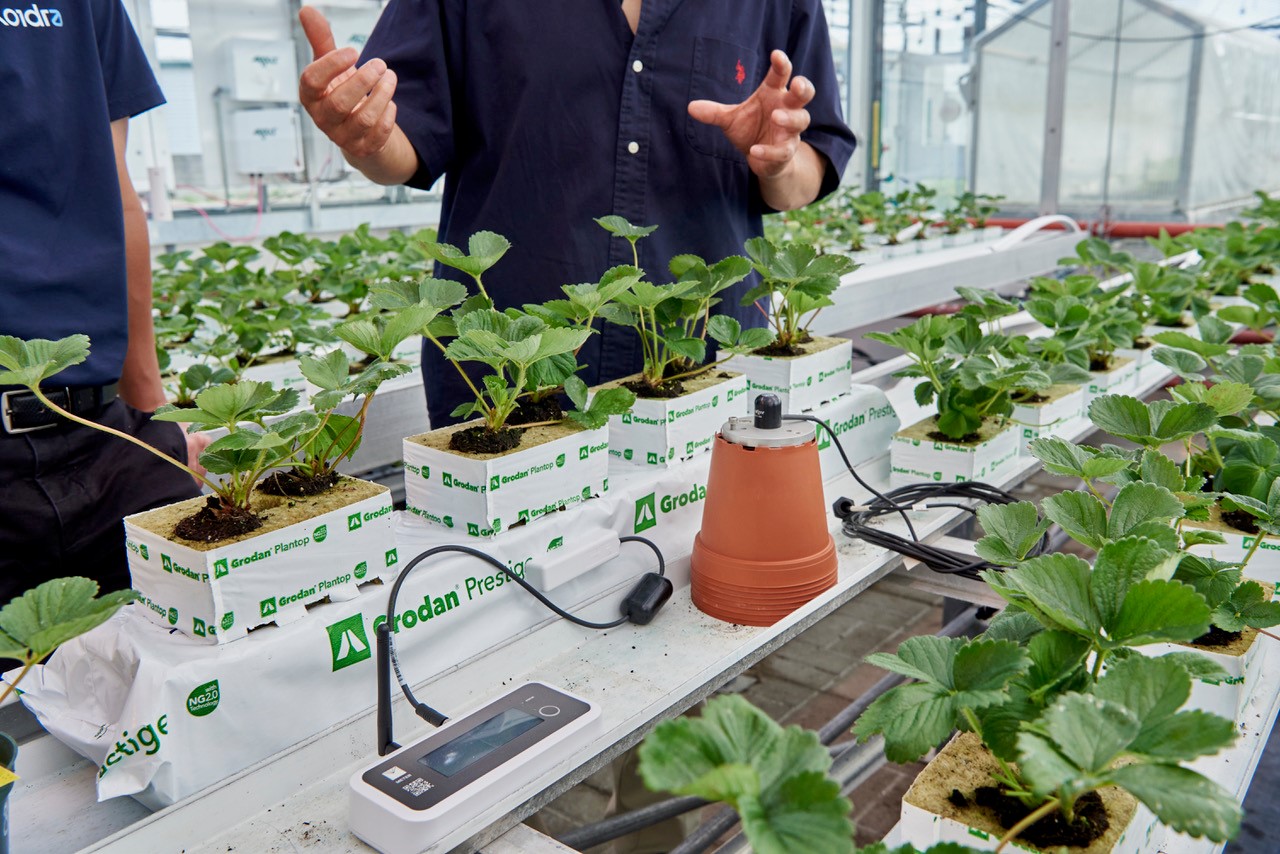
Two University of Guelph-led research teams aiming to change the way fresh produce is grown in Canada have entered the second phase of the Homegrown Innovation Challenge, a $33-million challenge prize to grow berries out of season and at scale in Canada. The initiative is funded and delivered by the Weston Family Foundation.
Dr. Mike Dixon and Dr. Youbin Zheng, both professors in the School of Environmental Sciences (SES) within the Ontario Agricultural College, are leading teams exploring sustainable and cost-effective ways to extend the growing season of berries.
Their teams are among 11 selected nationwide to develop small-scale, proof-of concept berry-growing solutions. Figuring out how to grow berries out of season — sustainably and competitively — will unlock solutions for myriad other fruits and vegetables.
“That two U of G-led research teams have been selected for the next phase of the Homegrown Challenge speaks to University of Guelph’s research strengths, especially our innovative approaches to developing and implementing the most advanced new agri-food technologies, in this case in controlled environment agriculture,” says Dr. Rene Van Acker, interim vice-president (research).
“Profs. Dixon and Zheng are long-standing leaders in this agri-food technology, which will be increasingly an important part of our sustainable food systems locally and globally.”
Applying vertical farming lessons learned in space
Dixon and his team have received $691,730 to develop a controlled environment agriculture (CEA) system that manages strawberry production to meet market demands and consumer preferences.

“Consumers experience seasonal variations in strawberry availability, price and quality because, throughout the year, the Canadian market is served by a range of production options, from field to greenhouse either domestic or imported,” Dixon explains.
Their system will combine state-of-the-art greenhouse practices with vertical farming methods in a hybrid production strategy, increasing overall productivity and stabilizing supply of both berries and plants.
“To stabilize these factors and reduce the variability in supply and quality, we propose to grow strawberries with solutions we’ve developed to grow food in space,” Dixon says.
Specialized LED lighting will be used to extend the growing season. Adjusting the light intensity and spectra, producers can enhance traits preferred by consumers, such as flavour and shelf life for strawberries, he adds.
The project team includes SES researchers Dr. Thomas Graham and Dr. Michael Stasiak and experts from Mucci Farms, North America’s largest grower of controlled-environment strawberries.
“My team brings valuable experience of how to make controlled environment agriculture successful and Mucci brings long-term experience with growing strawberries in greenhouses,” Dixon says. “Together, we’re creating a solution for year-round berries that is profitable for the producer and delivers a high-quality product consumers will love.”
AI conserves water, eliminates pesticides

Zheng and his team have received $999,918 to use artificial intelligence (AI) and smart automation to take the guesswork out of providing optimal growing conditions for berries.
“Growing berries in controlled environments requires balancing many interconnecting parameters, such as lighting, air humidity and temperature, rootzone dissolved oxygen, water and nutrients,” Zheng says. “If one factor changes, the others change too. It’s beyond the capacity of conventional greenhouse practices to manage precisely and effectively.”
Their system uses sophisticated biosensors to monitor plant health, measuring and fine-tuning parameters every few minutes to provide plants with what they need in the moment.
For example, excess water in the root zone can cause oxygen deficiency and promote the growth of pathogens. AI allows an integrated approach to managing fertigation, Zheng says, establishing an ideal root zone for plant growth, conserving water and fertilizers and eliminating the need for pesticides.
The system will provide producers better control over their costs — energy, water and nutrients — and minimizes wastewater and nutrient discharge.
“Reducing costs and growing high-quality, high-yield fruit means maximizing profits for producers,” says Zheng.
Zheng’s team includes AI engineers from Koidra, an intelligent automation company, and horticulturalists and engineers from Agriculture and Agri-Food Canada and the Ontario Ministry of Agriculture, Food and Rural Affairs.
CEA technology moves beyond berries
While berries are the focus of the challenge, competitors’ solutions will also be judged on how they can be adapted to grow a variety of fruits and vegetables.
Using CEA technology in harsh environments, such as the Canadian North or the hot, dry climates of the Middle East, can address the profound challenges of food security, says Dixon.
CEA systems can also help protect the environment by reducing water use, nutrient runoff and CO2 emissions, while providing an alternative to traditional agriculture in the event of climate change, says Zheng.

Strawberries a focus of the challenge, but solutions could be applied to more fruits and vegetables (photo by Kathryn Hollinrake)
About the Homegrown Innovation Challenge
The Homegrown Innovation Challenge encourages innovation in domestic fruit and vegetable production – specifically berries – to reduce Canada’s reliance on imported produce and build a more resilient food system.
“At the heart of this competition lies the belief that the fusion of collaboration and broad expertise is the key to solving complex challenges in agriculture,” says Garfield Mitchell, chair of the Weston Family Foundation. “Our grantees bring out-of-the-box, yet achievable ideas to the table, and we are excited to see the innovations that arise from their shared passion and collaboration.”
Four teams will move on to the next phase of the challenge at the end of this year. Each will receive up to $5 million over three years to build farm-scale, market-ready systems.
About the Weston Family Foundation
Founded more than 60 years ago, the Weston Family Foundation (formerly The W. Garfield Weston Foundation), is focused on the relationship between healthy landscapes and healthy aging. It champions world-class health research and innovation as well as initiatives to protect and restore biodiversity on Canada’s unique landscapes. The foundation takes a collaborative approach to philanthropy, working alongside partners to create lasting impacts and transformational ways to improve the well-being of Canadians.